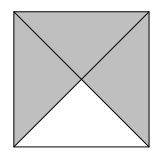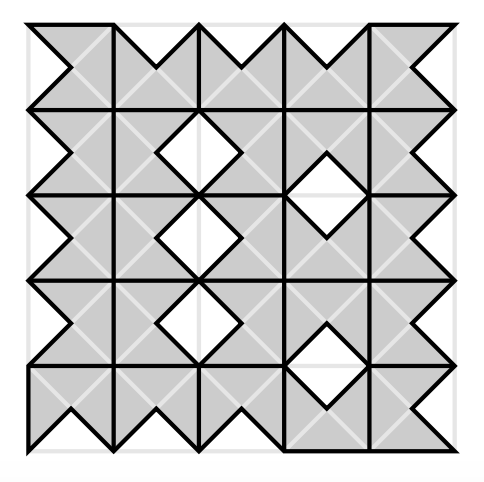Minimal(ist) Tiling
Consider the tile below, with three gray edges and one white edge. A
square is made from
tiles, all with the same pattern, as shown. Any two adjacent tiles have the same color along the shared edge. What is the smallest possible number of gray edges in the perimeter of the
square?

This section requires Javascript.
You are seeing this because something didn't load right. We suggest you, (a) try
refreshing the page, (b) enabling javascript if it is disabled on your browser and,
finally, (c)
loading the
non-javascript version of this page
. We're sorry about the hassle.
Clearly in each corner we need at least one gray edge. To show that 4 cannot be achieved, note that there are 2 5 × 3 − 4 gray edges not on the border in this case, which is odd. But each gray edge must match up with a gray edge, so the number of gray edges must be even. Thus, there must be at least 5 (shown below).